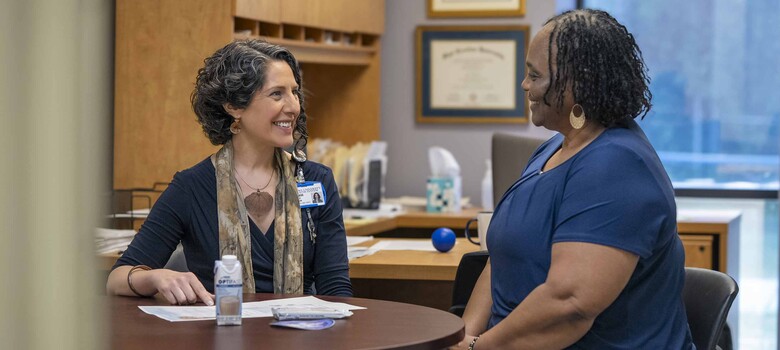 From the DukeHealth.org archives. Content may be out of date.
From the DukeHealth.org archives. Content may be out of date.
First Use of Cadaver Nerves to Repair Corneal Anesthesia Shows Promise

Ilya Leyngold, MD
A new, minimally invasive procedure that replaces damaged corneal nerves with a donor nerve restores feeling in the cornea and halts progressive eye damage caused by a condition known as corneal anesthesia. The use of the donor nerve, an advance pioneered at Duke, may help people recover faster after surgery and could impact how other chronic eye conditions are treated.
What Is Corneal Anesthesia?
Corneal anesthesia -- the medical term is neurotrophic keratopathy -- is a potentially devastating condition that can arise after certain viral infections of the eye, brain tumors or surgery, diabetes, contact lens abuse, and other causes. It occurs when the nerves to the cornea are damaged, leaving the eye unable to feel sensation when injured. “Without the ability to sense pain, the eye cannot protect itself from, or heal properly after, scratches and injuries,” said Ilya Leyngold, MD, a plastic and reconstructive eye surgeon at Duke. This can lead to severe infection and vision loss.
Until recently, treatments for corneal anesthesia focused on protecting the eye from further damage -- using drops to keep the eye lubricated, wearing a protective hard contact lens, or having the eyelids stitched together -- but didn't treat the problem. Several years ago, doctors considered replacing the damaged corneal nerves with a healthy nerve found underneath the eyebrow. However, because the extensive procedure required a large surgical cut from ear to ear, it was rarely considered as an option.
Transferring Nerves with Smaller Incisions
Doctors began experimenting with a new way to repair the damaged nerve, using small incisions to transplant a segment of nerve -- called a graft -- from a patient's leg. The minimally invasive procedure treated corneal anesthesia but carried an additional risk of complications at the site in the leg where the nerve graft was removed.
Replacing Patient’s Healthy Nerves with Cadaver Nerves
Nerves harvested from cadavers have been used extensively to regenerate damaged nerves elsewhere in the body, and research showed they are comparable to a patient's own nerves. Dr. Leyngold thought they could be an option for treating corneal anesthesia as well. The new option is less invasive, as a nerve would not need to be removed from the patient's leg. This would minimize the risk of complications. Initial surgeries have been successful. A clinical trial is about to get underway, which will allow Dr. Leyngold to further test this method.
Ideally, Dr. Leyngold said, the new approach will allow people with corneal anesthesia to be treated earlier -- hopefully as soon as it is diagnosed. This could halt its progression before serious eye damage occurs.
Said Dr. Leyngold, "Because the use of the cadaver donor nerve involves less surgery, less downtime, and potentially fewer complications, it's my hope that we can increase the number of patients we can help, and someday offer this procedure to people who have only partial loss of corneal sensation such as seen in other chronic eye conditions, including certain types of dry eye."


